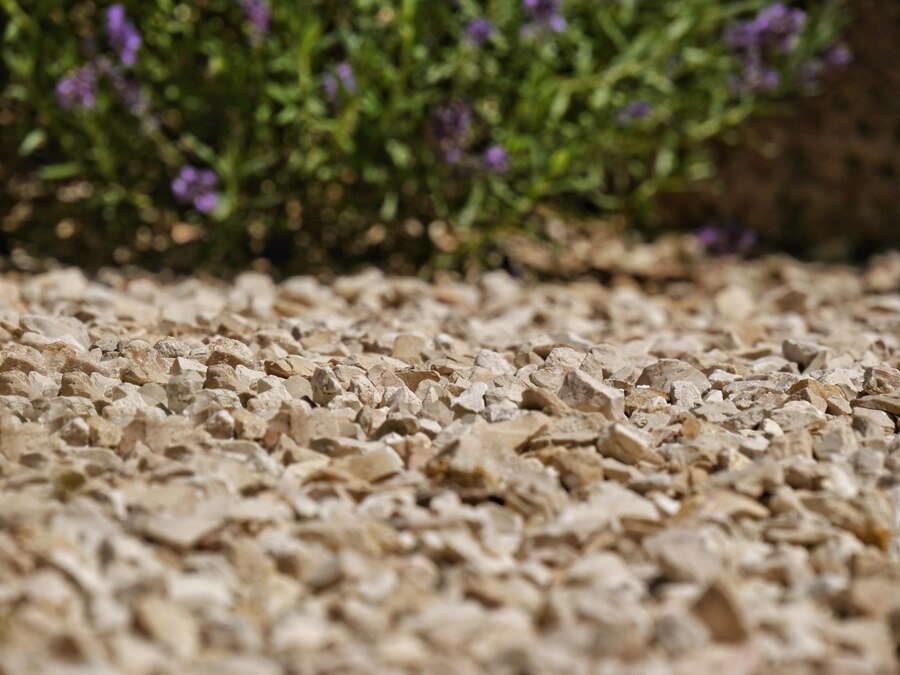When you’re trying to make your garden feel more finished, borders are a smart place to start. They help keep everything separated—like grass from mulch or flowers from gravel—and give your yard a cleaner look. For homeowners in Kenmore, this visual structure makes a big difference as summer garden maintenance and outdoor enjoyment peak around mid-July. A well-defined edge not only ties everything together but also makes mowing and upkeep easier. Whether you’re refreshing older beds or planning a small update, adding borders can help shape your outdoor space without making drastic changes.
One option many residents are turning to is crushed rock. It provides a clean, durable way to build neat lines around a garden without the upkeep headaches that come with other materials. It stands up to Kenmore’s weather, holds shape over time, and blends naturally with both traditional homes and modern designs. If you’ve been dealing with shifting mulch or tripping over sloppy edges, switching to crushed rock might be the low-pressure solution you’re looking for.
Benefits Of Using Crushed Rock For Garden Borders
Crushed rock continues to be a preferred choice for garden borders, especially in areas like Kenmore where weather shifts can put other materials to the test. It’s valued not just for its appearance, but for its long-term function. If you’re considering changing out your border materials, here’s why crushed rock holds up.
– Long-lasting materials: Unlike wood or plastic edging, crushed rock doesn’t break down in the sun or rain. Once it’s installed, there’s little reason to revisit it each season.
– Low maintenance: Weeds struggle to grow through a properly installed rock border, and pests are less likely to nest. Cleanup is usually no more than a quick rake or sweep.
– Flexible aesthetics: From smooth pea gravel to angular basalt, there are size and color options to match any yard. Lighter rock often brightens up shady corners, while darker pieces blend well into natural surroundings.
– Natural drainage: Crushed rock helps direct water runoff and keeps flower beds from getting soggy during heavier rains. That’s particularly helpful in yards where pooling tends to occur near the edges.
This combination of form and function helps Kenmore homeowners reduce weekend chores while still keeping things looking polished. One homeowner near Rhododendron Park swapped out a rotting timber border for crushed rock and noticed right away how fresh and defined the flower bed looked afterward. The area no longer overflowed with mulch during summer storms, and it didn’t need resetting after mowing.
Selecting The Right Crushed Rock For Your Garden
Picking the wrong type of rock can leave your border looking off or even lead to problems with runoff or shifting stones. With several types available, it’s important to choose the right material for your specific yard and layout.
Start with size. Smaller rocks, like pea gravel, are great for clean finishes along curved lines, while larger angular crushed pieces are better for staying in place on slopes or straight walls. Next is color. Neutral grays and soft tans tend to work well across most gardens, but some homeowners prefer black lava rock or white limestone for higher contrast.
When matching the rock to your garden design:
– Avoid overly shiny decorative stones that can distract from planting beds.
– Pick rock colors that either complement or subtly contrast your garden materials—like pairing dark crushed basalt with light mulch.
– Stick with one rock type throughout a single border section to avoid patchy-looking lines.
To figure out how much crushed rock to order, measure the length of your border, decide the width and depth of coverage, and multiply those numbers to get the total cubic feet. From there, convert to cubic yards or tons using an online calculator or with help from one of our professionals. For most residential borders, a layer about 2 to 3 inches deep gives enough coverage and stability without making the edge feel bulky.
With the right preparation and crushed rock picked out, your garden border can become a strong, attractive anchor for the rest of your yard. Getting that right makes everything else in your landscape plan feel more pulled together and intentional.
Step-By-Step Guide To Installing Crushed Rock Borders
Proper installation goes a long way in making sure your crushed rock borders last through Kenmore’s seasons and daily use. Cutting corners during setup could mean weeds sneaking through, rocks spilling onto walkways, or lines shifting out of shape—not exactly what you want after putting in the effort to improve your yard. Start with a clear plan and work in phases to avoid doubling back later.
1. Measure and mark the border. Sketch out the shape you want your border to follow. Use a garden hose or string to lay out curves and straight lines so you can visualize the final result before digging.
2. Clear the area. Remove any grass, weeds, or loose soil along the path where the rock will go. At this stage, it’s smart to dig a shallow trench—about 3 to 4 inches deep depending on your desired finished height. This keeps the crushed rock contained and flush with the surrounding surface.
3. Install a weed barrier. Roll out landscape fabric across the trench to block unwanted growth from underneath. Secure it with fabric staples to prevent it from shifting or bunching when you add rock.
4. Add edging support. Depending on your landscape and design, you can use steel, plastic, or stone edging to help the crushed rock stay in place over time. It’s an extra layer of structure that gives clean lines to garden bed transitions.
5. Spread and level the crushed rock. Pour your selected rock over the fabric and smooth it out using a flat rake. Make sure the layer is consistent throughout the border for visual balance and durability.
6. Finish the edges. For open areas where the rock meets the lawn or patio, take time to tamp down the sides gently. This stops loose pieces from washing into the grass or spreading too far when walked on.
Avoid rushing this part. Even a basic crushed rock border looks sharp with the right framing and prep work. One homeowner near Moorlands Elementary noticed how edge spills were much less common after switching from mulch to properly bordered rock. The appearance was neater, and the space held its shape month after month, even after routine foot traffic and rainstorms.
Maintenance Tips For Crushed Rock Borders In Kenmore
Once your crushed rock borders are in place, keeping them well-maintained shouldn’t take much time—as long as you check in on them once in a while. Left untended, weeds can creep in through the tiniest gaps, and displaced rocks can make a clean border look messy.
Start by scheduling quick monthly cleanups. You don’t need to pull everything out—just take a five-minute sweep through the yard to:
– Rake rocks back into place if any scatter onto paths or lawns
– Pull any weeds attempting to surface at the edge of the fabric
– Check the edges for shifting and re-tamp them as needed
Winter in Kenmore brings extra moisture, and that can lead to some washing out along the borders. If this happens, simply scoop the displaced rock back into place. Installing a small lip using leftover edging material can also help prevent this in high runoff zones.
After heavy rain or windstorms, give the area a quick look. If parts of the rock begin to settle or sink unevenly, you may need to refresh that section with a small add-on layer to bring everything back to level. Most issues like this are isolated and won’t require a full redig or replacement.
Seasonal changes bring minor adjustments. As planting shifts in and out of beds, be careful not to scoop or toss soil onto the crushed rock. Over time, built-up dirt can encourage weeds and blur the definition between bed and border. A small hand broom or leaf blower makes fast work of clearing it back off.
These quick routines go a long way toward keeping that polished feel through backyard traffic, changing weather, and regular upkeep. The more consistently you check in on your rock borders, the fewer bigger fixes you’ll need down the road.
Transform Your Kenmore Garden With Beautiful Crushed Rock Borders
Crushed rock works harder than it looks. Once installed correctly, it builds a strong visual perimeter that helps gardens stand tall, even when the rest of the yard is in transition. Whether you’re prepping cane roses or rotating out seasonal plantings, tidy edges let the beds take center stage.
Many Kenmore residents appreciate that these borders don’t just look nice—they also stay nice. It’s one of the few landscaping details that doesn’t demand constant adjustment throughout the year. When rocks stay put, beds stay cleaner, and your whole garden seems more under control.
A well-installed rock border doesn’t require perfect garden skills. You just need a layout that fits your yard and a material that brings lasting definition to your existing design. With some thoughtful planning and regular care, crushed rock makes your work outdoors easier to manage while adding real value to the space around it. Whether your garden is just a few flower beds or covers a full yard, borders you don’t have to worry about can lift the whole space.
Enhance your garden’s structure this summer by reinforcing your edges and pathways with practical solutions. A smart way to reduce maintenance and improve visual appeal is by using crushed rock in Kenmore to create clean, durable garden borders. For a quick estimate or to book a service visit, please contact us today.

